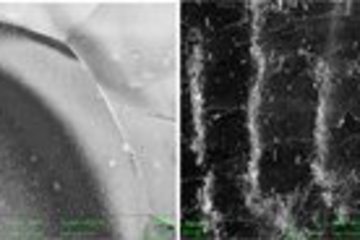All genres
2321.
Teaching
Das Gold anderer Leute.
2322.
Teaching
Herrscher über Gold und Stahl.
2323.
Teaching
Die Mythen der Metalle. Lecture: online teaching
2324.
Teaching
Polymer structure and micromechanics. Lecture: Vorlesung, RWTH Aachen, Germany
2325.
Teaching
Dislocation-dynamics. Lecture: Vorlesung
2326.
Teaching
Geschichte der Metalle. Lecture: Vorlesung, RWTH Aachen, Germany
2327.
Teaching
Geklaute Metalle. Lecture: Vorlesung
2328.
Teaching
Methoden der theoretischen und experimentellen Untersuchung der plastischen Dehnung auf Kornebene.
2329.
Teaching
Kristallographische Grundlagen der Texturen von Stahl.
2330.
Teaching
Anisotropie, Textur, Umformtechnik.
2331.
Teaching
Principles to design and simulate hierarchical materials with property-relevant structural features.
2332.
Teaching
Ridging Phenomena in BCC and FCC Polycrystals.
2333.
Thesis
Untersuchung des Einflusses definierter Schmierverhältnisse am Beispiel des Flachstauchversuches. TU, Clausthal, Germany (2002)
2334.
Thesis - PhD
Critical factors for bearing failures by localized severe plastic deformation. Dissertation, RWTH Aachen, Germany (2022)
2335.
Thesis - PhD
Advancing the understanding of the microstructure-property relationship in non-toxic and cost-effective thermoelectric Heusler compounds. Dissertation, Fakultät für Georessourcen und Materialtechnik der RWTH Aachen, Germany (2022)
2336.
Thesis - PhD
Influence of Processing Parameters, Crystallography and Chemistry of Defects on the Microstructure and Texture Evolution in Grain-Oriented Electrical Steels. Dissertation, RWTH Aachen, Germany (2022)
2337.
Thesis - PhD
Grain boundary segregation of boron and carbon and their local chemical effects on the phase transformations in steels. Dissertation, Faculty of Georesources and Materials Engineering of the RWTH Aachen, Germany (2021)
2338.
Thesis - PhD
Design of Invar and Magnetic High-Entropy Alloys. Dissertation, RWTH Aachen University (2021)
2339.
Thesis - PhD
Fundamentals of carbide decomposition and stability. Dissertation, Ruhr-Universität Bochum (2021)
2340.
Thesis - PhD
Engineering Impurities in Colloidal Nanostructures used in ‘Green Hydrogen’ Generation. Dissertation, RWTH Aachen University (2021)











